How Mass Collaboration Is Transforming Company and Culture—Mining Disruption’s Silver Lining
 “We are flying into some turbulence, so please return to your seats and keep your seatbelts fastened while we try to find more favorable winds.”
“We are flying into some turbulence, so please return to your seats and keep your seatbelts fastened while we try to find more favorable winds.”
As chronicled in the just-published Decade in Review 2000-2009, the twenty-first century is proving to be volatile and disruptive in every way, and 2010 will continue the trend. Three disruptive forces are converging: the relative value of the Industrial Economy continues to fall as overproduction reigns. Globalization is replete with extras that people at the head table didn’t order. Most imperceptibly yet poignantly, the emerging Knowledge Economy is digitizing communications and changing the economics of knowledge and relationships. Web 2.0 and social networks drive down the cost of communication, which accelerates volatility because when people talk, ideas change and lead to action, and digital conversations happens faster and less expensively. Social networks are rapidly making “the Web” human, thereby attracting an ever-larger portion of all human communications online. In 2009, adoption reached critical mass, ramping strongly among consumers, so many enterprises are following. The Web 1.0 adoption rhythm is very instructive.
Pervasive Web 2.0 also means reexamination or disruption of most areas of life, culture, society, government and business because social networks alter how many and what kind of relationships people have. The impact is similar to Ford’s production line, except it is more powerful: it scales relationships. Large organizations will remain in a profound state of turmoil because they were not built to withstand the volatility these forces are unleashing. Many Fortune 500 companies will be confronted with their survival, and some will not make it. Entire industries will consolidate over the next several years (automotive, airlines, banking, hotels, food, consumer goods…). Web communications mean we consume novelty far more quickly, which curtails product life cycles and leads to ultra-fast commoditization. Companies will require unprecedented innovation to even stay in place. New entrants around the world compete for customers and leverage their lower costs and better innovation processes. And Web 2.0 is still in the early stages of adoption.
This dynamism elevates opportunity and threat for executives and their organizations, so our focus here is to lay out probable milestones for 2010 to assist executives in business strategy and career planning for 2010 and beyond. First, I will lay out predictions, on which I’ll build for my 2010 recommendations. By the way, this follows Year in Review—2009/Social Networking Gains Legs on Heavy Seas and Decade in Review 2000-2009/The Rise of Web 2.0, the New Pervasive Human Space.
2010 Predictions
 The Economy will continue to be unpredictable, and demand will be spotty in 2010. Numerous structures of the global Industrial Economy are in doubt, which delays business decisions everywhere. The U.S. juggernaut has serious economic problems related to healthcare and the lack of fiscal discipline that will not be resolved soon, and no one really knows what the impact will be, except it will be significant. Japan and European economies have similar issues for similar reasons (except healthcare). Related to this, there is more uncertainty around the U.S. Dollar as a reserve currency than there has been in decades. Major economies’ central banks are aiming to ease back on the assistance they have been using to support their economies, and this entails significant risk. Unemployment will continue to be high due to the uncertainty, and this dampens consumer demand. Overproduction is rampant, which keeps deflation on the table as a potential risk. These are all structural issues that call for leadership and discipline in facing the unknown. I wish I could see “quick fix” scenarios to any of these, but I cannot. These conditions will persist for some time, so I advise clients to embrace them as a reality.
The Economy will continue to be unpredictable, and demand will be spotty in 2010. Numerous structures of the global Industrial Economy are in doubt, which delays business decisions everywhere. The U.S. juggernaut has serious economic problems related to healthcare and the lack of fiscal discipline that will not be resolved soon, and no one really knows what the impact will be, except it will be significant. Japan and European economies have similar issues for similar reasons (except healthcare). Related to this, there is more uncertainty around the U.S. Dollar as a reserve currency than there has been in decades. Major economies’ central banks are aiming to ease back on the assistance they have been using to support their economies, and this entails significant risk. Unemployment will continue to be high due to the uncertainty, and this dampens consumer demand. Overproduction is rampant, which keeps deflation on the table as a potential risk. These are all structural issues that call for leadership and discipline in facing the unknown. I wish I could see “quick fix” scenarios to any of these, but I cannot. These conditions will persist for some time, so I advise clients to embrace them as a reality. Company failures will continue to make headlines. Automakers, airlines and consumer goods firms will fail or be sold on the cheap. Industries will continue to consolidate to take production capacity out. Mainstream media titles will disappear: newspapers especially will continue to see readership and ad revenue plummet. However, online advertising will continue to increase, and ad agencies that cannot transition to digital fast will fail. This will confront governments with unpalatable choices: support enterprises that are “too big to fail” or let them go under, disrupting the economy either way. These decisions are affecting most of the world’s largest economies. Worse, 20th century leaders still cling to the idea that BRIC will drive up demand for their products, but this will largely prove to be a mirage: emerging economies will rapidly innovate and grow their own industries to cater to their growing demand.
Company failures will continue to make headlines. Automakers, airlines and consumer goods firms will fail or be sold on the cheap. Industries will continue to consolidate to take production capacity out. Mainstream media titles will disappear: newspapers especially will continue to see readership and ad revenue plummet. However, online advertising will continue to increase, and ad agencies that cannot transition to digital fast will fail. This will confront governments with unpalatable choices: support enterprises that are “too big to fail” or let them go under, disrupting the economy either way. These decisions are affecting most of the world’s largest economies. Worse, 20th century leaders still cling to the idea that BRIC will drive up demand for their products, but this will largely prove to be a mirage: emerging economies will rapidly innovate and grow their own industries to cater to their growing demand.- Employment for executives will be stagnant, which will require them to commit to consulting, not only as an interim arrangement between jobs but as a more permanent career. Industrial Economy organizations are transforming, so this will permanently change the structure of work, but demand for services will persist. Organizations in turmoil will avoid hiring as much as possible, but they will urgently need expertise and will contract extensively. Smart executives will chunk their expertise smaller (consulting), but this will require them to use social networks to reduce business development costs. In a related development, executive blogging (more below) will see case studies in which executives are hired or contracted due to their blogs. Within 3 years, executives in several industries will be expected to have their thoughts online. Consulting is the new employment ,^(
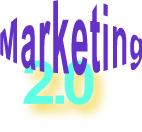 Marketing 2.0 will conquer numerous big brands because Industrial Economy push marketing is a deflating dirigible, and customers are experts at tuning out mass media. Marketing 2.0 combines digital and word of mouth in a new philosophy, to treat customers as collaborative partners. Marketing executives have been intensively interested in Web 2.0 during the past two years, and they are increasing their investments slowly. Marketers still have to confront their assumptions about how to engage customers: too many marketing organizations still talk about “content” that they push to consumers. The customer wants to hear other customers, and too few marketers understand that. According to Forrester, digital agencies are displacing traditional agencies in agency of record roles at big brands, and look for this trend to continue. In tough times especially, CMOs love digital’s ability to offer ROI. What they lack is relationship-focused investment models for social networks. Their agencies’ DNA is creative, not roll-up-your-sleeves customer contact and relationship building (it’s not sexy), which will lead to disappointments.
Marketing 2.0 will conquer numerous big brands because Industrial Economy push marketing is a deflating dirigible, and customers are experts at tuning out mass media. Marketing 2.0 combines digital and word of mouth in a new philosophy, to treat customers as collaborative partners. Marketing executives have been intensively interested in Web 2.0 during the past two years, and they are increasing their investments slowly. Marketers still have to confront their assumptions about how to engage customers: too many marketing organizations still talk about “content” that they push to consumers. The customer wants to hear other customers, and too few marketers understand that. According to Forrester, digital agencies are displacing traditional agencies in agency of record roles at big brands, and look for this trend to continue. In tough times especially, CMOs love digital’s ability to offer ROI. What they lack is relationship-focused investment models for social networks. Their agencies’ DNA is creative, not roll-up-your-sleeves customer contact and relationship building (it’s not sexy), which will lead to disappointments.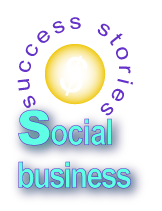 Social business will see mixed results—on one hand, marketing spend will increase 2x or 3x this year. Given #4, social media, which connotes pushing content through “social” channels, will grow the most rapidly because it is closest to legacy marketing thinking. Social networks will grow more slowly because they require new thinking and skills, but they will increase engagement much more. 2010 will be a parade of case studies. However, this upsurge will be accompanied by a palpable backlash against “social media” in which mainstream media (MSM) will criticize social’s lack of effectiveness, but usually for the wrong reasons. Too often, MSM doesn’t get Web 2.0, and they have negative attitudes because Web 2.0 is raising the bar for transparency, speed and analysis while it takes attention away from them.
Social business will see mixed results—on one hand, marketing spend will increase 2x or 3x this year. Given #4, social media, which connotes pushing content through “social” channels, will grow the most rapidly because it is closest to legacy marketing thinking. Social networks will grow more slowly because they require new thinking and skills, but they will increase engagement much more. 2010 will be a parade of case studies. However, this upsurge will be accompanied by a palpable backlash against “social media” in which mainstream media (MSM) will criticize social’s lack of effectiveness, but usually for the wrong reasons. Too often, MSM doesn’t get Web 2.0, and they have negative attitudes because Web 2.0 is raising the bar for transparency, speed and analysis while it takes attention away from them.- Companies will build “social media” teams in earnest. Beginning in Q3 2009, CMOs and CEOs began asking for social networking strategy to weave together their initiatives and synchronize them with business strategy. Consequently, the Social Network Roadmap features prominently in my practice, and this trend will continue into 2011. Large commercial and government organizations have been experimenting, and marketing leaders no longer seriously think of social as a fad, so they will hire “directors of social media” in 2010, and early adopters will create spots for vice presidents of social media and social networking later in the year. These social execs will manage teams of internal and external bloggers, twitter jockeys, video production people and community organizers. “Community Organizer” will become a piping hot position, too.
- Social network platform review—2009 was sizzling hot as social network platforms vied for attention. This market couldn’t get more dynamic or competitive as key players broke boundaries, invaded each other’s turf all year, with no end in sight. Here is my back-of-the-envelope on some of the major platforms:
 Twitter—served as 2009’s dark horse and disrupted the Web 2.0 ecosystem, jangling market leaders Facebook and Google. Twitter created another category of social space that very few people understand yet, especially those who comment from the sidelines. Twitter’s competitiveness is largely driven by the social context it created—ubiquitous real-time status—and that remains its key competitive advantage. People are sharing every aspect of their experiences, even very private things, on Twitter because each tweet is only a glimpse. Twitter is lowering privacy barriers and changing the game. Because people tweet from everywhere all the time, followers are becoming a substitute for Google’s search for some use cases. Meanwhile, Twitter will be seen as the tipping point for the end of walled garden model. I don’t expect Twitter to go through any ownership changes in 2010; they’ve already turned everyone down, their paper value is at parity with Facebook’s and their numbers are strong. Most people don’t know how to use Twitter yet. They are fielding enterprise services in 2010.
Twitter—served as 2009’s dark horse and disrupted the Web 2.0 ecosystem, jangling market leaders Facebook and Google. Twitter created another category of social space that very few people understand yet, especially those who comment from the sidelines. Twitter’s competitiveness is largely driven by the social context it created—ubiquitous real-time status—and that remains its key competitive advantage. People are sharing every aspect of their experiences, even very private things, on Twitter because each tweet is only a glimpse. Twitter is lowering privacy barriers and changing the game. Because people tweet from everywhere all the time, followers are becoming a substitute for Google’s search for some use cases. Meanwhile, Twitter will be seen as the tipping point for the end of walled garden model. I don’t expect Twitter to go through any ownership changes in 2010; they’ve already turned everyone down, their paper value is at parity with Facebook’s and their numbers are strong. Most people don’t know how to use Twitter yet. They are fielding enterprise services in 2010. Facebook—Facebook is the “portal of life” in which an increasing portion of executives and their stakeholders engage and share across all spectra. Until 2009, Facebook had a walled garden strategy: “Attract everyone to Facebook, where they would transact and we would learn more about them.” They wanted to take over the world by attracting the world to them. Facebook is one of the stickiest sites in the world, measured by length of time people spend on it. They reversed that strategy in December 2009 with the change in privacy, and they are opening the wall to push private content to the Web, where Google can access it and get Facebook more exposure (and advertising revenue). In typical form, Facebook didn’t give members much choice as some content was reclassified (i.e. friends are now public). Facebook is still struggling with converting its tremendous stickiness to revenue. It is much more likely to acquire others. Its recent deal with Yahoo was hailed as a coup de grace due to the opportunity to create synergy with the two huge audiences. Facebook is acting like a large company now.
Facebook—Facebook is the “portal of life” in which an increasing portion of executives and their stakeholders engage and share across all spectra. Until 2009, Facebook had a walled garden strategy: “Attract everyone to Facebook, where they would transact and we would learn more about them.” They wanted to take over the world by attracting the world to them. Facebook is one of the stickiest sites in the world, measured by length of time people spend on it. They reversed that strategy in December 2009 with the change in privacy, and they are opening the wall to push private content to the Web, where Google can access it and get Facebook more exposure (and advertising revenue). In typical form, Facebook didn’t give members much choice as some content was reclassified (i.e. friends are now public). Facebook is still struggling with converting its tremendous stickiness to revenue. It is much more likely to acquire others. Its recent deal with Yahoo was hailed as a coup de grace due to the opportunity to create synergy with the two huge audiences. Facebook is acting like a large company now. Google—is the nervous system of the Web, and its overall strategy is to encourage people to forsake the machine for the cloud (hence the battle with Microsoft). Twitter has been a godsend for Google because it has turned the tide away from the walled gardens. Facebook was a thorn in Google’s side because its growth and high-value transactions were invisible. Google is not a social company per se, but I include them here because they are such an influence in the market, and they are experimenting with becoming more social. They are challenging Microsoft, they launched real-time search to neutralize Twitter’s erstwhile real-time advantage. Moreover, Facebook sees itself as competing with Google, with the differentiation that it measures social transactions among friends. Google is likely to acquire.
Google—is the nervous system of the Web, and its overall strategy is to encourage people to forsake the machine for the cloud (hence the battle with Microsoft). Twitter has been a godsend for Google because it has turned the tide away from the walled gardens. Facebook was a thorn in Google’s side because its growth and high-value transactions were invisible. Google is not a social company per se, but I include them here because they are such an influence in the market, and they are experimenting with becoming more social. They are challenging Microsoft, they launched real-time search to neutralize Twitter’s erstwhile real-time advantage. Moreover, Facebook sees itself as competing with Google, with the differentiation that it measures social transactions among friends. Google is likely to acquire. LinkedIn—is the quintessential B2B enterprise play; it is relatively outside the mainstream news, but it is executing its strategy of becoming the executive collaboration platform of choice. It has seasoned hands at the tiller, and I expect LinkedIn to drive further into the enterprise in 2010. This also represents a change: in 2007 the company had a competitive stance vis à vis enterprise software providers, now it is partnering with them. If LinkedIn maintains this strategy, it will avoid major transactions; it can play a slow game and will end up rewarding shareholders handsomely. No transactions, but I expect select strategic alliances to continue. As I’ve said for some time, LinkedIn can become the swiss bank of executive profiles, and I was excited to see the unveiling of LinkedIn API Platform go live in November.
LinkedIn—is the quintessential B2B enterprise play; it is relatively outside the mainstream news, but it is executing its strategy of becoming the executive collaboration platform of choice. It has seasoned hands at the tiller, and I expect LinkedIn to drive further into the enterprise in 2010. This also represents a change: in 2007 the company had a competitive stance vis à vis enterprise software providers, now it is partnering with them. If LinkedIn maintains this strategy, it will avoid major transactions; it can play a slow game and will end up rewarding shareholders handsomely. No transactions, but I expect select strategic alliances to continue. As I’ve said for some time, LinkedIn can become the swiss bank of executive profiles, and I was excited to see the unveiling of LinkedIn API Platform go live in November. MySpace—constantly surprises me during client work, although it has clearly lost its title as the leading social network to Facebook. However, depending on the demographics of stakeholders, MySpace can be an extremely relevant platform for engaging people, as I’ve repeatedly discovered through client work. Leadership of the company is wandering, and management is delivering relatively little value add, but the community is large. It is the platform most likely to be bought as leadership doesn’t seem to have a strong vision or business strategy. News Corp failed the acquisition and doesn’t seem to have the vision or skills to make it work, so I expect it to unload MySpace, which could only benefit the company.
MySpace—constantly surprises me during client work, although it has clearly lost its title as the leading social network to Facebook. However, depending on the demographics of stakeholders, MySpace can be an extremely relevant platform for engaging people, as I’ve repeatedly discovered through client work. Leadership of the company is wandering, and management is delivering relatively little value add, but the community is large. It is the platform most likely to be bought as leadership doesn’t seem to have a strong vision or business strategy. News Corp failed the acquisition and doesn’t seem to have the vision or skills to make it work, so I expect it to unload MySpace, which could only benefit the company.
- Social tech will relentlessly drive rich experience into the cloud, but few people will notice. At a minimum, watch for 3 key trends and, even better, consider pilots with them.
 Federated identity will gain significant traction. Examples are Facebook Connect and Google FriendConnect which enable users to use their credentials to log in to third party websites (think “single sign-on” for the Web). This will encourage more mainstream users to interact with Web 2.0 sites, which require logins. More important, however, it will make friends portable. For example, log into CNN.com via Facebook Connect (FC), and your Facebook Friends who are also members of CNN.com will appear when you’re on the site, so you can read their comments or interact with them, and share this on your Facebook Wall. It enables you to interact with Facebook Friends on third-party sites of which you are all members (have logged in with FC). Google FriendConnect is a similar offer except it is not restricted to your “friends” because it doesn’t know who they are. Federated identity + social will rapidly become a mechanism for people to ask their friends for input on buying decisions. It will change how people buy.
Federated identity will gain significant traction. Examples are Facebook Connect and Google FriendConnect which enable users to use their credentials to log in to third party websites (think “single sign-on” for the Web). This will encourage more mainstream users to interact with Web 2.0 sites, which require logins. More important, however, it will make friends portable. For example, log into CNN.com via Facebook Connect (FC), and your Facebook Friends who are also members of CNN.com will appear when you’re on the site, so you can read their comments or interact with them, and share this on your Facebook Wall. It enables you to interact with Facebook Friends on third-party sites of which you are all members (have logged in with FC). Google FriendConnect is a similar offer except it is not restricted to your “friends” because it doesn’t know who they are. Federated identity + social will rapidly become a mechanism for people to ask their friends for input on buying decisions. It will change how people buy.- Syndication will ramp strongly in 2010. For one example, LinkedIn’s Platform enables developers to syndicate LinkedIn data into enterprise applications. The Web 2.0 ecosystem will see significant advances in 2010 in which experience is the seamless result of content and functionality of multiple properties simultaneously. The rule is, don’t recreate, syndicate. Leverage the ecosystem.
- Widgets have been around forever, but they are vastly neglected as engagement tools. A widget is a mini application whose code normal (i.e. non-tech ,^) people can put on their websites, blogs or social networking profiles. Google FriendConnect is a simple example. Companies thus gain a foothold in others’ websites; however, to win this right, their widgets must do something interesting and valuable, so the person wants to have that functionality on her site. Widgets are another way to create and leverage the ecosystem by letting stakeholders create with your information or functionality.
- Social business models and tactics will see more case studies in 2010, and here are four with which you should at least experiment in 2010:
 Crowdsourcing—loosely means asking the crowd for input or advice on important questions, usually in a transparent venue, so the crowd itself can vet responses, driving up quality and cred. Most executives don’t understand the dynamics of transparent forums, so they overlook the potential, which has three key levers: 1) quality is high due to the crowd’s diversity and ability to evaluate responses; 2) crowdsourcing increases engagement because people feel honored that you are asking their opinion; 3) it is fast and inexpensive. You cannot afford to not crowdsource because you will be harmed by competitors who do. It is not complicated, but you need to develop expertise and approach to how to ask, manage venues and follow up to maximize value. One brilliant enterprise example is Facebook’s globalization strategy.
Crowdsourcing—loosely means asking the crowd for input or advice on important questions, usually in a transparent venue, so the crowd itself can vet responses, driving up quality and cred. Most executives don’t understand the dynamics of transparent forums, so they overlook the potential, which has three key levers: 1) quality is high due to the crowd’s diversity and ability to evaluate responses; 2) crowdsourcing increases engagement because people feel honored that you are asking their opinion; 3) it is fast and inexpensive. You cannot afford to not crowdsource because you will be harmed by competitors who do. It is not complicated, but you need to develop expertise and approach to how to ask, manage venues and follow up to maximize value. One brilliant enterprise example is Facebook’s globalization strategy.- Comm-Co—is my term for “community company,” the Threadless model. The company serves as an enabler for its online community, which designs products and decides which products are made. I predict that Comm-Co will become widespread for consumer products in general. I’m talking ketchup, apparel, bicycles, tech gadgets, cars. By giving customers a role in designing products or services, you give them a chance to give of themselves, increasing engagement. Give your company to your customers, and your profits will climb. Specifically regarding Threadless, the company has an opportunity to syndicate its business model, as Amazon did. As you remember, Amazon pioneered numerous e-commerce technologies and business processes, and it subsequently used its model to serve as the back end for other companies (i.e. Toysrus, Borders, Target). Did you know that Zappos gives seminars on using culture as a competitive weapon?
- Pro-Am—mashes up professionals and amateurs to collaborate. Amateurs supply passion, out-of-the-box ideas and time while professionals leverage their expertise. This creates a powerful profit-making cocktail that will become a dominant business model in the next 3-5 years. The Industrial Economy was about buyers and sellers, producers and consumers. The Knowledge Economy is about collaboration. Everyone is an amateur of several things and an expert is a couple things. Unlock the value by inviting amateurs to contribute. Quality is high and cost is low. The Pro-Am model will be prominent in continuous innovation.
- Gaming and virtual worlds have negative connotations for many executives (“waste of time”), but when you abstract them, you realize they are just structured types of engagement, and many online games and worlds are intensely collaborative. Collaboration in social network forums and gaming are along the same continuum. Contrast World of Warcraft and Wired’s experiment with starting over.
 Consumer empowerment will see prominent case studies in 2010. Empowerment refers to individuals using Web 2.0 technologies for citizen activism, outing companies or governments or people. Now everyone has a digital communications megaphone, and people will increasingly use it. Expect to see examples like Saint Regis, United, McDonald’s and others. This will call for Web 2.0 disaster recovery services. This threat will increase exponentially as mobile phones have video cameras, so your company is one click away from YouTube.
Consumer empowerment will see prominent case studies in 2010. Empowerment refers to individuals using Web 2.0 technologies for citizen activism, outing companies or governments or people. Now everyone has a digital communications megaphone, and people will increasingly use it. Expect to see examples like Saint Regis, United, McDonald’s and others. This will call for Web 2.0 disaster recovery services. This threat will increase exponentially as mobile phones have video cameras, so your company is one click away from YouTube.- Mobility and mobile social networking have been simmering the the U.S. for years, and 2010 will see significant growth. The U.S. lags Asia and Europe for several reasons: computer penetration is high, wireless network is poor, provider environment stifles innovation. In most of the world, people access the Internet with their mobiles, and this will start coming true everywhere.
- The iPhone has mainstreamed the market for smartphones in the U.S. due to ease of use, smart design and focus on “iLife” (music, movies and business). Meanwhile, iPhone applications have extended the “phone” to almost any area of human endeavor, so it has become a limitless tool. The U.S. carriers are, if belatedly, finally at 3G. Other significant device competitors like Android and Blackberry will only extend the trend.
- Mobile devices are mobile computers, and they give people the ability to create text, photo, audio and video content and publish in 1 or 2 clicks. Every person is increasingly a publisher, which will disrupt many businesses. Companies need to develop a mobile strategy in 2010 with some urgency in order to take advantage of this opportunity to engage people wherever they are in time and space. This will take time because they will have to rediscover how stakeholders experience their company. Increasingly, stakeholders will share all aspects of their experiences, and companies need to engage them.
- Mobile payments via mobile phone will continue to make inroads, increasing the importance of “the device.” These are taking 2 forms: P2P services like Nokia Money and POPMoney and Mastercard’s MoneySend. Nokia is also a leader in mobile contactless payments (via RFID and NFC technology). This will proceed slowly in the U.S., but it is advanced in parts of Asia and Europe.
 Video will be increasingly mainstream, which will require companies to have strategies and processes to be present. As you’ve undoubtedly heard, YouTube is the second largest search engine in the U.S., behind Google. It means that, for many people (they skew younger), the first request for information is for video, which will eventually displace reading as the main medium for information gathering. Video requires production capability and some coordination of camera and verbal channels, so this is not trivial. The tools are getting easier to use every quarter, which will increase participation. Google is working hard on technology that “reads” video and makes video content searchable. Of course, their endgame there is attaching ads to the YouTube video vault. This is certainly an audacious undertaking, but I’ll wager that they have put significant resources against it.
Video will be increasingly mainstream, which will require companies to have strategies and processes to be present. As you’ve undoubtedly heard, YouTube is the second largest search engine in the U.S., behind Google. It means that, for many people (they skew younger), the first request for information is for video, which will eventually displace reading as the main medium for information gathering. Video requires production capability and some coordination of camera and verbal channels, so this is not trivial. The tools are getting easier to use every quarter, which will increase participation. Google is working hard on technology that “reads” video and makes video content searchable. Of course, their endgame there is attaching ads to the YouTube video vault. This is certainly an audacious undertaking, but I’ll wager that they have put significant resources against it.
2010 Recommendations
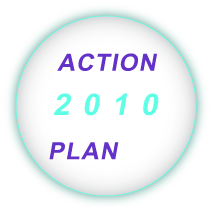 I hope you can see that the Knowledge Economy represents a profound shift in society and business. The good news is, the way you make your transition to it will largely determine whether you survive or thrive. As I review this list, the macrotrends I see are economic uncertainty and increased collaboration tools, skills and expectations. Your company’s place in the value chain/web and your relationships with stakeholders will determine how immediately these trends affect you. In general, customers are consulting each other on what, how and when to buy everything, so companies need to be engaged with influencers. It is no longer about having ads and “content” available, it’s about interacting and creating relationships. Your company needs to know how to show the right people how you care about them. You can’t buy this, you have to earn it.
I hope you can see that the Knowledge Economy represents a profound shift in society and business. The good news is, the way you make your transition to it will largely determine whether you survive or thrive. As I review this list, the macrotrends I see are economic uncertainty and increased collaboration tools, skills and expectations. Your company’s place in the value chain/web and your relationships with stakeholders will determine how immediately these trends affect you. In general, customers are consulting each other on what, how and when to buy everything, so companies need to be engaged with influencers. It is no longer about having ads and “content” available, it’s about interacting and creating relationships. Your company needs to know how to show the right people how you care about them. You can’t buy this, you have to earn it.
Based on my experience with disruptive technologies and current work advising companies and executives on their Web 2.0 adoption strategies, I’ll offer this guidance for 2010. I invite your questions in comments or privately.
Enterprise
- Identify, define, understand and engage your Web 2.0 ecosystem. Web 2.0 communication and empowerment are rapidly changing stakeholders’ expectations, and most companies do not understand how. You need concrete answers for:
- What are stakeholders (customers, investors, regulators, employees, partners, alumni…) doing in Web 2.0 venues?
- Why are they there, what are they trying to accomplish?
- Which venues do they use, how do they use each venue and why?
- How are they engaging with each other, competitors and other players?
- Based on your culture, core competencies and business goals, how can you engage efficiently and effectively?
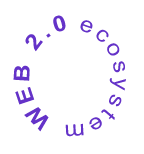 Develop resident skills with Web 2.0 technologies, processes and sensibilities. This is a strategic imperative because stakeholders will increasingly expect you to be available. Your presence will have a major impact on buying decisions. For many companies, 2010 will be the last year that they can move ahead of their competitors. Keep in mind, Web 2.0 is all about social behavior; it’s not a technology you can buy and put in place; your people and proxies have to learn how to act, and that’s a process you need to pursue aggressively.
Develop resident skills with Web 2.0 technologies, processes and sensibilities. This is a strategic imperative because stakeholders will increasingly expect you to be available. Your presence will have a major impact on buying decisions. For many companies, 2010 will be the last year that they can move ahead of their competitors. Keep in mind, Web 2.0 is all about social behavior; it’s not a technology you can buy and put in place; your people and proxies have to learn how to act, and that’s a process you need to pursue aggressively.
- Blogging is about what you think, not about selling. Leave the latter for your Website. No matter what your business is, you have to share your thoughts online. This also means engaging bloggers with impact on your stakeholders by commenting on their blogs.
- Contribute to online forums frequented by stakeholders. This might be LinkedIn Answers, industry forums prominent blogs, MySpace or Yahoo forums, wherever stakeholders are asking questions and solving problems.
- Deploy social business infrastructure internally to drive skill development and increase productivity; kick off pilots in which teams use wikis, blogs, microblogging, social bookmarking and rich media.
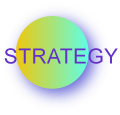 Assign a top executive to manage your adoption of Web 2.0 because changing stakeholder expectations will change your business. Do you want to let this happen to you reactively, or do you want to proactively help guide stakeholders’ expectations?
Assign a top executive to manage your adoption of Web 2.0 because changing stakeholder expectations will change your business. Do you want to let this happen to you reactively, or do you want to proactively help guide stakeholders’ expectations?
- Develop a social business strategy that includes: your overall approach considering risks, rewards and business strategy; goals, timelines and resource requirements; metrics and measurements; a risk-managed process to scale your initiatives. Your availability to interact with stakeholders will increasingly drive your brand value because they will expect you to be present, appropriate and sincere. Your company, employees and proxies need to learn how to do that. It’s not easy because people have to unlearn some key things that used to work but no longer do.
- The strategy will enable you to create a strategic dialog among management; in 2010 and 2011, executives are going to be doing remediation because social projects are happening all over the enterprise, in some cases counteracting each other. I’m not advocating centralization and controlling message, but having goals and meeting them collaboratively will significantly increase returns.
- Create a strategic dialog within the organization and with partners and people outside. You need an adoption approach that considers the spectrum of risks and focuses your efforts on rewards that move your business strategy.
- Your champion should have experience leading “innovation”-type initiatives that break rules and ruffle feathers. S/He should also be open to personally embracing social practices (i.e. blogging, tweeting, interacting online).
 Create and maintain a relationship-centric mindset for your Web 2.0 initiatives. See the Social Network Life Cycle Model and the Relationship Life Cycle for more on this.
Create and maintain a relationship-centric mindset for your Web 2.0 initiatives. See the Social Network Life Cycle Model and the Relationship Life Cycle for more on this.- Use risk management best practices to maintain momentum. Keep pilots small, specific and rapid to shrink ROI discussions, measure results and scale what’s working. Quickly.
- Partner with IT on your initiatives, and engage “realistic enthusiasts” to understand IT’s capabilities and willingness to syndicate social content in from outside (LinkedIn Profile information, for one).
Individual
- Start blogging. Here is my free Quick Launch Guide to get on in about an hour.
- Take your LinkedIn Profile up a level. People go to LinkedIn when they are looking for expertise. Remember, Web 2.0 is about interaction, not content. You can pay for content, but your attention is priceless. On LinkedIn, this means:
- Participating in LinkedIn Answers: answer others’ questions and ask questions; this attracts attention
- Putting your slides on your profile via Slideshare
- Invoking your blog posts on your profile with the WordPress or BlogLink Apps
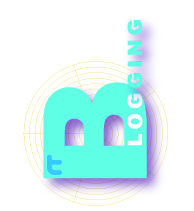 Commit to tweeting. Twitter is a new mode of communication that you need to understand because it is transforming communication and creating new kinds of relationships. See Twitter: Key Disruptive Innovation of the Decade.
Commit to tweeting. Twitter is a new mode of communication that you need to understand because it is transforming communication and creating new kinds of relationships. See Twitter: Key Disruptive Innovation of the Decade.- Cut back on unproductive networking. Don’t fall into networking as an activity trap. If you drive an hour to/from an event and spend 3 hours there, that’s half a day. You could have written 6 blog posts and answered 4 LinkedIn questions. When you have a content strategy for your blog, it creates digital breadcrumbs that are always working for you. If you choose the LinkedIn questions you answer judiciously, people will discover them at any time. At face-to-face networking events, the value dissipates much more quickly. I’m not saying to reduce face-to-face significantly, but cutting back on two events per month will give you more than enough time to ramp up online, where the leverage is far greater.
- Relentlessly conduct yourself so that you increase trust with people who count. Make introductions, answer questions, give help, ask for help, follow through on what you promise. In Web 2.0 environments, other people are observing our interactions. We can choose to be creeped out by that, or use it to our advantage. When you are authentic and help people, other people see. Huge leverage.
“We made it! Welcome to Socialtech International Airport, where you can make these connections: Twitter at gate 12C, LinkedIn at 6A, Blogging at 3B…”

You have opened my eyes and ears to the value of social networking. I’m a CEO 69 years and passionate about my successful business I want to improve and learn new more effective avenues of communication
Terrific insights and information. Thank you.
I look at 2009 as the Year of Survival. And 2010 as the Year of Reconnecting.
I believe that no one has a secure job. Everyone needs to build and work their network/community. Just about everyone will be pleased to reconnect – no matter how long it has been – but not many will be proactive to take the lead on reconnecting.
Social media is the most effective and efficient way to do this.
You have described the landscape for this and actions to make people do better.
Thanks.
Gary Pines
Don and Gary, thanks for giving feedback. Gary, you capture succinctly something I feel very strongly about and tried to capture in another post, Geography 3.0, that posits that the large scale that arose in human societies beginning with the Agrarian Economy 10,000 years ago and continuing 300 years ago with the Industrial Economy will be seen as artificial and unlike us. As Dunbar points out beautifully, we are designed to be connected with groups of about 150 people, it’s how we’ve lived for millennia. So this is very disruptive and scary, but I believe human societies will end up being happier and healthier once the transformation is complete. In the meantime, a lot of air pockets!
Don, glad to hear that! If you’re trying to apply these tools to your e-commerce business, I have extensive free information online. If you think the direction is interesting, I’d be open to a call to brainstorm.
Your statement that executives need to commit to consulting versus full-time employment validates many of my senior executive friends experience the last 2 years. Applying your Web 2.0 recommendations is important to our professional and personal brands. As consultants, we need to “earn attention” with our clients and partners.
I agree that this is the year that businesses and those of us who have realized that we are our future business need to look back on lessons learned from social networking and begin looking at social interactions as a driving thrust of their business strategy. I encourage my clients to look at this strategy as a “social rose” model similar to the compass rose. Increasingly we will need to evaluate our personal branding steps and our business development goals in relation to not only social media. We will need to develop plans that encourage all forms of social interactions in our social channels. I see these plans as needing certain key elements including immediacy, role in a global economy, cultural outcomes, philanthropy and ethics.
[…] http://globalhumancapital.org/?p=1023 […]
[…] The 2009 Year in Review gives you the chance to come up to speed rapidly or fill in the holes in your understanding. My perspective comes from intense collaboration with exceptional pioneers of enterprise-focused social networking. Many of the articles come from client work and real situations I encountered this year. I have reviewed 2009′s articles, selected the best and wrapped them in a review and analysis to help you realize where we have been, so you can better plan where you want to go in 2010. […]